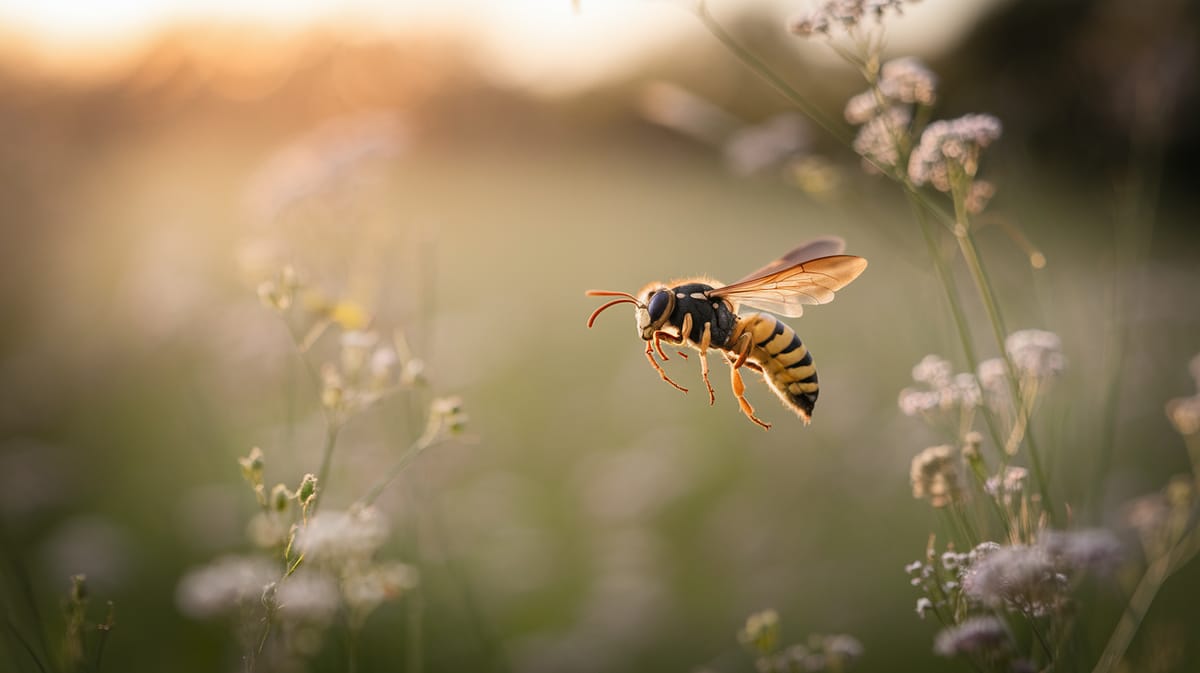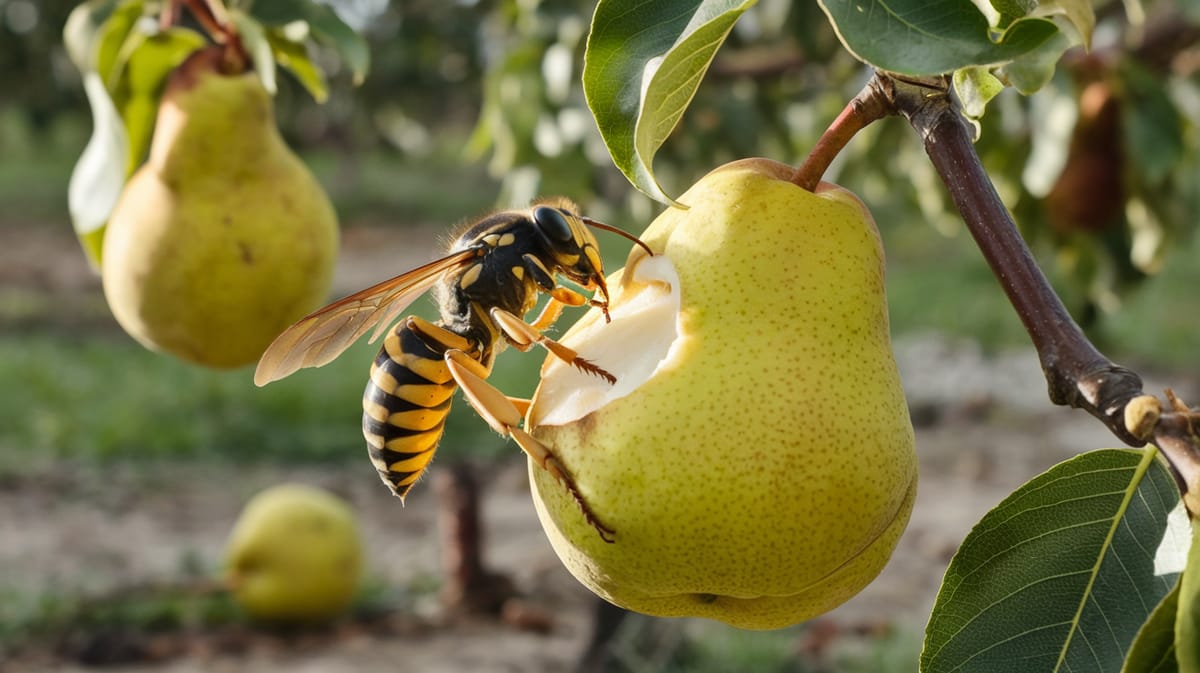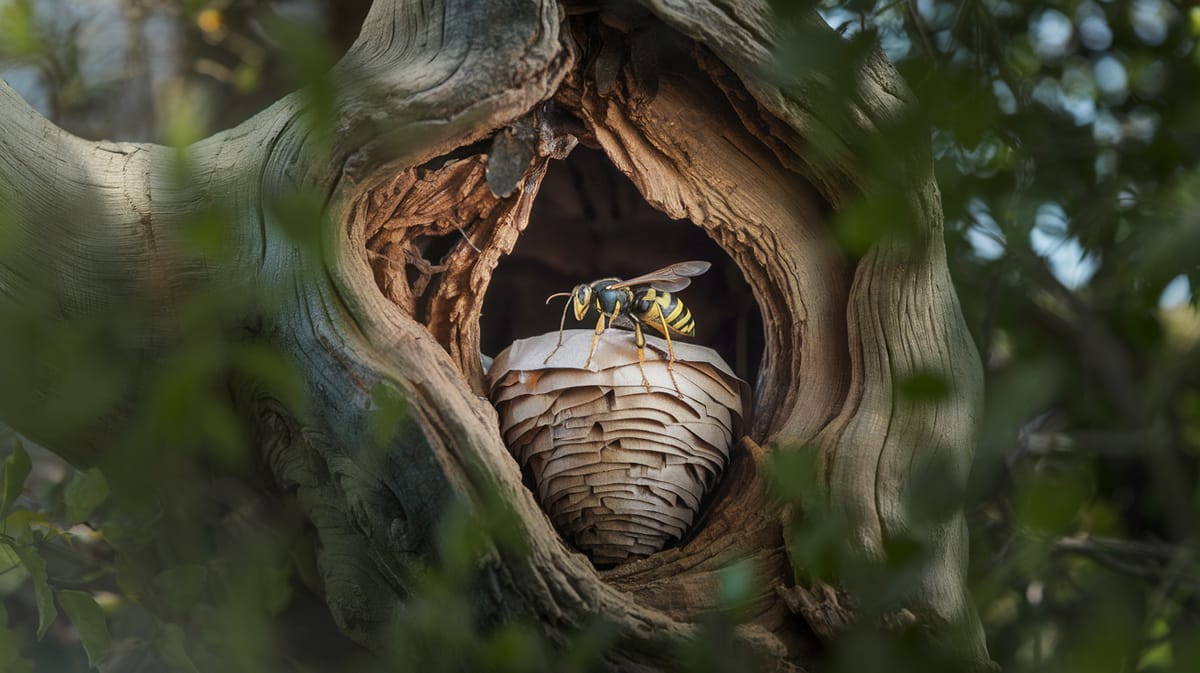European Hornet
Fierce and formidable, the European Hornet is a social wasp known for its impressive size and intricate nest-building skills. It plays a vital role in controlling insect populations.

Key Insights at a Glance
Did You Know?
Taxonomy & Classification
The European hornet, Vespa crabro, is a formidable insect known for its impressive size and social structure. These hornets are crucial as both predators and pollinators. Let's understand the evolutionary journey and classification of these remarkable predators, pollinators.
Species Distribution
Vespa crabro is the only true hornet found in North America and Europe, thriving in temperate climates across these continents.
Evolutionary Adaptations
Originating in Eurasia, these hornets have adapted to diverse environments, demonstrating resilience through changing climates and human expansion.
Lifecycle and Growth
A remarkable journey of transformation from Egg to Adult.
Egg
Laid by the queen in spring, eggs are small and oval, hatching quickly to continue the colony's growth.
Larva
Fed by worker hornets, larvae develop in protective cells, undergoing several molts before pupating.
Pupa
Pupae undergo transformation within a cocoon, emerging as adult hornets with full wings and features.
Adult
Adults maintain the colony, with workers foraging and queens preparing for overwintering to start new colonies.
Dietary Habits
A formidable hunter with keen instincts, this insect's diet includes live prey and sweet plant-based resources.
| DIET TYPE | DESCRIPTION |
|---|---|
| Primary Diet | Primarily consumes other insects like bees, flies, and grasshoppers, using powerful mandibles to capture them. |
| Secondary Diet | Often feeds on tree sap and fruit juices, enhancing energy levels with these sugary resources. |
| Occasional | Occasionally preys on small vertebrates and scavenges from human food sources, exploiting available opportunities. |

Behaviour and Adaptations
Discover the fascinating traits that define the European Hornet's adaptability in its environment.
Nocturnal Foraging
Efficiently hunts at night, avoiding competition and predators.
Powerful Mandibles
Capable of cutting through tough plant material for nest building.
Communal Defense
Protects colony with coordinated attacks against threats.
Ecosystem Impact
Essential role in maintaining ecological balance through natural predation and resource recycling.
Natural Pest Control
Preys on various insect pests, significantly reducing their populations.
Food Source
Serves as prey for birds and mammals, supporting wildlife diversity.
Nutrient Recycler
Breaks down organic matter, aiding in nutrient cycling in ecosystems.
Conservation Challenges
Addressing the crucial threats to European Hornet populations.
Habitat Loss
Urban growth and deforestation reduce nesting sites for European Hornets.
Chemical Exposure
Pesticides and pollutants damage hornet health and disrupt ecosystems.
Climate Change
Altered weather patterns affect hornet food sources and lifecycle timing.
Frequently Asked Questions
How long do European Hornet live?
European Hornets typically live for a few weeks to several months, depending on their role within the colony. Worker hornets live for a few weeks, while queens can survive through winter, starting a new colony the following spring.
What do European Hornet eat?
European Hornets are predatory and primarily feed on other insects such as flies, bees, and grasshoppers. They also consume plant matter, fruits, and tree sap for carbohydrates.
Are European Hornet poisonous?
European Hornets are not poisonous, but they do have a venomous sting that can be painful and cause allergic reactions in some people. Their sting is used for defense and subduing prey.
Are European Hornet endangered?
European Hornets are not considered endangered. They are widespread across Europe and have established populations in parts of North America. Their adaptability allows them to thrive in various environments.
What do European Hornet symbolize?
In various cultures, hornets often symbolize attributes such as power, productivity, and teamwork due to their social structure and industrious nature. However, symbolism can vary widely across different cultural contexts.
Do European Hornet bite?
European Hornets do not bite. They are equipped with a stinger and will sting rather than bite when threatened. Their sting can be painful and is used both for defense and capturing prey.
What color are European Hornet?
European Hornets are mostly brown with yellow abdominal stripes and a pale face. Their coloration helps them blend into their environment, which is typical for many wasp species.
Does a European Hornet have wings?
Yes, European Hornets have two pairs of wings. Their wings are transparent with a slight brownish tint. These wings enable them to fly and hunt for food efficiently.
What does a European Hornet look like?
European Hornets are large wasps, measuring about 1 to 1.5 inches long. They have a robust body with brown and yellow coloration, a pale face, and transparent wings. They resemble other wasps but are notably larger.
Is a European Hornet an insect?
Yes, the European Hornet is an insect. It belongs to the order Hymenoptera, which includes wasps, bees, and ants. Like other insects, they have three main body parts: the head, thorax, and abdomen, as well as six legs.
Related Insects
Discover insects with similar characteristics to European Hornet - including shared habitats, diets, and taxonomic classifications
Share this profile
Help others discover European Hornet
